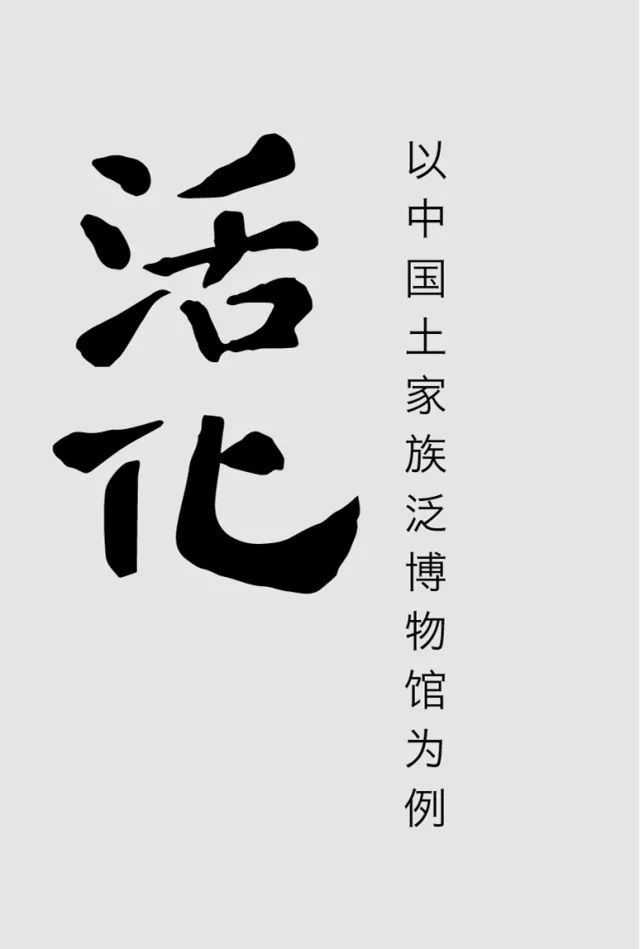- 注册
- 登录
- 小程序
- APP
- 档案号


建筑档案 · 2019-09-25 12:02:32

民族的就是世界的,湖北省恩施州宣恩县人民政府将联手雅伦格文化艺术基金会将“中国土家族泛博物馆”5月27日即将呈现在2018年第十六届威尼斯建筑双年展上,这是中国土家族建筑和文化第一次在威尼斯建筑双年展国际平台上的展示,对土家族的文化保育和发展具有重要的现实意义!

我们将分别邀请展览的三位策展人为大家揭秘这次展览的面纱。

马里诺·福林

李保峰

姚 京

李保峰
Professor Li Baofeng

中国,华中科技大学建筑与城市规划学院教授
School of Architecture and Urban Planning,Huazhong University of Science and Technology P.R.China
李保峰教授
个人简介
华南理工大学学士
华中理工大学硕士
清华大学博士
德国慕尼黑工大
高级访问学者
国家一级注册建筑师
享受中国国务院政府特别津贴专家
目前担任华中科技大学建筑与城市规划学院教授、博导,武汉华中科大建筑规划设计研究院有限公司董事长,《新建筑》杂志社社长,《建筑师》杂志社编委,中国建筑学会理事,中国建筑学会资深会员,中国高等学校建筑学专业评估委员会委员。
恩施土家族苗族自治州位于湖北省西南部,与神秘的北纬 30度黄金分割线重叠,南北向则穿过富于地理学意义的、区分中国东西两部分的东经110度线,海拔高度介于400~1700米之间。相传土家族为上古巴人后裔,战国时为楚人,秦灭楚,部分楚人因避秦而遁入深山,于是便有了《桃花源记》所载之武陵人和延绵数百平方公里的桃花源。
Enshi, a Tujia people and Miao people’s autonomous prefecture located in southwest Hubei Province, happens to overlap with the golden section line of 30 degrees north latitude. Along the south-north direction the prefecture crosses the 110 degrees east longitude, which serves as a boundary line between the east and the west part of China, a line full of geographic meanings. The altitude of the prefecture ranges from 400 to 1700 meters. Legend says that Tujia people are actually the descendants of the Bazi people in ancient China. During the Warring States period they were first ruled by Chu (a state). After Chu was defeated and conquered by Qin, another state, some of the Chu people fled to the mountains, and hence the famous prose “An Idyllic Land of Peach-Blossom Spring” about a Wuling native and his exploration into the Peach-Blossom Spring.
山高水险,交通不便,这客观上使得恩施山区成为冷冻文化的冰箱,土家聚落及建筑保留了大量历史信息的沉淀,形成为数不多的、至今可见的人类文遗产。
High mountains and swift torrents make access to Enshi quite difficult, rendering it an isolated ‘refrigerator’ that freezes the native cultures while at the same time keeps them alive. A large quantity of historical information has been hidden in Tujia people’s settlements and the constructions thereupon, making it a rare heritage of human cultures.
传统土家聚落分为靠山寨、滨水寨、依山傍水寨三种。土家聚落体现了顺应自然的布局方式、与山水相融的节制态度、高效利用资源的建造方式,谦和轻巧的接地方式、适应气候的空间逻辑以及与生活及生产方式高度统一的空间形态。
There are mainly three different types of Tujia people’s settlements: mountain foot village, waterfront village, and village that stands near the mountain and by the river. From these settlements we could clearly see a layout that is conforming to nature, an abstinence attitude that seeks harmony with the surroundings, a construction concept that aims at high efficient utilization of resources, a moderate and easy way to touch the ground, a spatial logic that is adaptive to the climate, and a spatial form that is highly consistent to the life style and the production methods.
中国历史上的多次战乱导致众多内陆地区无法得到海盐,几次著名的川盐济楚与土家人的聚落分布密切相关,土家聚落的空间分布具有文化线路研究的价值。
Wars were not seldom in China’s history, and chaos caused by them denied many inland areas access to sea salts. Many times salts produced in Sichuan were provided to Chu state to ease the shortage there. And several famous activities among them were closely related with Tujia people’s settlements. Tujia people’s settlements and their spatial distribution could provide valuable clues for the study of cultural spreading.
依照文化起源的“满天星斗”理论,吊脚楼具有人类居住文化原型的意义。作为上古时代三种重要的居住原型(巢居、穴居及湖居)之一,吊脚楼完美地呈现了土家人对自然的敬畏,清晰地诠释了“构木为巢”的技术逻辑,而土家居住建筑的院坝、檐下空间、堂屋、火坑的空间序列则体现了土家族生产、生活方式的空间逻辑。作为文化的物质载体,它清晰地体现了土家人的智慧。
There is a theory about the origins of the Chinese civilization – the so-called ‘starry sky theory’. According to this theory, Tujia people’s stilt house could be regarded as one of the prototypes of human being’s residential cultures. There were mainly three different types of residence in ancient times, namely to live on the trees, to live in the caves, and to live on the lakes. The stilt house represents, in a perfect manner, the reverence of Tujia people for the nature, and shows clearly the technical logic of “constructing nest with woods”. And the courtyard, the space under the eaves, the central room and the heated brick bed in Tujia people’s residential constructions, together with their spatial order, display the spatial logic of Tujia people’s production and life. As a tangible carrier of the culture, they are all the representation of Tujia people’s wisdom.
鄂西山区,溪涧众多,降水丰富,古时村民常在村落出入口建造凉亭桥,避风雨,利通行,保村落之风水气脉。凉亭桥多为古道必经之处,来往人流众多,凉桥逐渐发展为村口的交流场所,若地处繁荣场镇,则必形成桥市。土家凉亭桥也是土家木构的精彩典范,其造型简朴自然,建造因地制宜,伸臂梁式结构独有特色。
Western Hubei is a mountainous area, with many rivers and streams, and it rains a lot. In old times people used to build pavilion bridges at the entrance to the village, in order to provide shelter and passage. Another function was to prevent the village from losing its fengshui and luck. Many pavilion bridges were also parts of the important paths, therefore the traffic was high. Gradually the pavilion bridges became meeting points for the people to socialize. For those built in prosperous places, a market could eventually emerge. Pavilion bridges built by Tujia people are also a very good example of the smart wood structure originated from Tujia people. The bridges usually looked quite simple and natural, and the construction materials were from the local, but the beam structure with extension arms were unique.
2000年前古罗马建筑理论家维特鲁威在其《建筑十书》(Vitrovius: Ten Books on Architecture)
19世纪德国建筑理论家森佩尔(Gottfried Semper)考察人类早期建筑,曾提出建筑4要素,即:火炉(hearth)、基座(mound)、屋面(roof)及围合(enclosure),并称其为建筑的基本组成要素。土家族传统建筑原型与森佩尔的住宅原型并不完全一致,其单体建筑之场坝、正门处的檐下空间、宽敞而开放的堂屋、神秘的火坑屋体现了土家人针对当时生产力水平以及对其生活及生产方式的整合。以此理论审视土家吊脚楼,我们发现,具有土家族农业生活原型意义的院坝及檐下空间,以及出于适应地貌原因而形成的“吊脚”类型是对森佩尔理论的补充。正是这种补充导致了土家建筑的鲜明特色。
In the 19th century, when German architecture theorist Gottfried Semper surveyed early constructions of human beings, he proposed the four fundamental elements of architecture, namely the hearth, the mound, the roof and the enclosure. The prototype of Tujia people’s traditional house does not fully conform with Semper’s prototype, because those houses and their structure, such as the courtyard in front of the house, the space under the eave at the front gate, the large and open central room, and the mysterious heated brick bed, were actually the results of the level of productivity at that time, as well as an integration of their life and production methods. Looking at Tujia people’s stilt house from this theory’s point of view, we could see that the courtyard and the space under the eave representing the prototype of Tujia people’s agriculture life, together with the method of stilting adaptive to the local landform, are actually supplementary to Semper’s theory. It is this supplement that makes Tujia people’s constructions standing out from others.
当代建筑理论家、美国哥伦比亚大学教授弗兰普顿(Frampton)提出的建构理论,关注材料的建造逻辑与建筑外观的真实表达之关系,这理论可由土家族传统建筑予以清晰地诠释:无论自由洒脱的吊脚系统、逻辑清晰的穿斗结构还是极富表情的“刀背梁”构件,无一例外,都透露着传统土家工匠们对自然的敬畏、建造的智慧和表达的真诚。
Kenneth Frampton, modern architecture theorist and professor of Columbia University, pays attention to the relationship between the construction logic of materials and the true expression of construction when he put forward the Tectonic theory. To our understanding, this theory could be clearly explained via Tujia people’s traditional house. Every element in this construction, be it the easy-going stilting system, or the column and tie structure with clear logic, or the expressive thin-rim components, are displaying Tujia craftsmen’s reverence for nature, their wisdom in construction, and their sincerity in expression.
1980年代,中国出现人口迁徙的可能,深山中的农民开始离乡进城打工,农村青壮年以常年离家为代价赚取了比原来务农更高的收入,但却导致家乡出现一系列问题:首先,村庄沦为“空心村”,村庄的常驻人口只剩老人、孩子和妇女,严重影响了村庄的社会生态和家庭的其乐融融;其次,进城务工农民挣的钱在乡村转化为某种特殊形态的不动产,它们既非传统工匠依老法营建,又非职业建筑师精心设计,与山清水秀的自然格局并不相配;第三,由于年轻人进城打工,导致农村缺乏劳动力,故农业产业逐渐荒芜,对于人多地少的中国,这种农村发展的模式是不可持续的。本次彭家寨泛博物馆规划设计,就是力求将旅游与有机观光农业相整合,吸引外出务工的村民回村参与新农村建设,在发展旅游的同时,挽救衰落的农业,重建良性的农村社会生态,为农村家庭注入活力,增添农民幸福感。
In 1980s, moving around was possible for Chinese people, and farmers started to leave their homes in remote mountains and went to cities to take jobs there. Young adults chose to leave their happy families and got jobs and higher salary in cities far away from home. But this has some side effects: many villages become “hollow” because only old people, children and women are left behind, affecting badly the social ecology and happy family life in the countryside. In addition, when migrant workers get their money, they quickly change that cash into some certain type of fixed assets. Unfortunately, those buildings are neither built by traditional craftsmen according to old construction methods, nor designed by professional architects. In one word, they are incompatible to the picturesque scenery in the surroundings. Thirdly, since all the young people have left home to the cities, labor force in the countryside is not enough to finish all the agricultural businesses, leaving the land unattended. For a country with a big population, this development mode is unsustainable. One of the purposes of Pengjiazhai museum design is to combine tourism with organic sightseeing agriculture, in order to attract the outgoing villagers to come home and take part in the construction of new countryside. It is our hope that by developing tourism in the countryside and revitalize the declining agriculture, a healthy social ecology in the countryside will be restored, and family life there will become more dynamic and happier.
作为建筑师,我们愿意用专业知识,为农村建设作出自己的贡献。我们希望以当代木结构建造向传统土家木匠致意,传承和发展土家族敬畏自然的价值观和因地制宜的建造智慧。
We architects should use our knowledge to do something, and make contributions to the development of countryside. We want to salute the traditional Tujia carpenters with the architecture of modern wooden structures, to inherit and to further develop Tujia people’s values which revere nature, and learn from their construction wisdom that is adaptive to the surroundings.
华中科技大学建筑与城市规划学院多位教授对土家族聚落及建筑有深入的研究,本次展览有他们的重要贡献。感谢李晓峰、万敏、赵逵、刘小虎及万谦教授为本次展览提供的学术支持。
Many professors in school of Architecture and Urban Planning, Huazhong University of Science and Technology have had thorough study on Tujia people’s settlements and architecture. They contributed a lot to this exhibition. We also want to express our thanks to Professors Li Xiaofeng, Wan Min, Zhao Kui, Liu Xiaohu, and Wanqian for the academic support they provided to this exhibition.
本文经李保峰先生授权转载
特别声明
本文为自媒体、作者等档案号在建筑档案上传并发布,仅代表作者观点,不代表建筑档案的观点或立场,建筑档案仅提供信息发布平台。
4
好文章需要你的鼓励

 参与评论
参与评论
请回复有价值的信息,无意义的评论将很快被删除,账号将被禁止发言。
 评论区
评论区